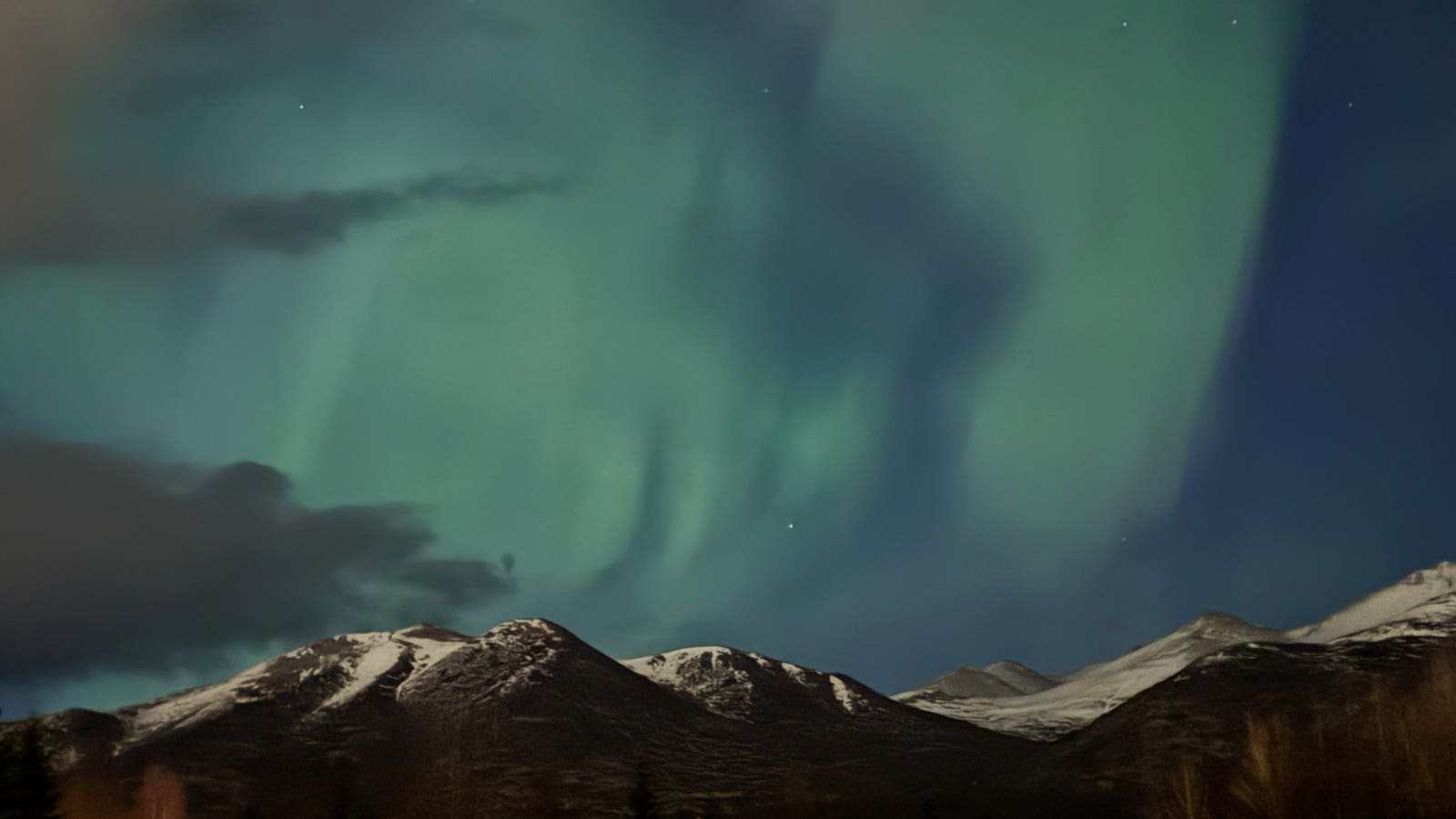Topline
Some states in the northern U.S. may have a chance to see the northern lights Thursday night, as auroral activity continues amid a peak in solar activity, according to a forecast from the National Oceanic and Atmospheric Administration.
The northern lights appear through a little bit of cloud cover in Anchorage, Alaska.
Key Facts
A northern lights forecast for Thursday night has a Kp index of four on a scale of nine, suggesting the aurora borealis will be seen farther from the poles and be “quite pleasing to look at” if observers are in the right areas, according to NOAA.
NOAA’s three-day forecast indicates similar auroral activity is expected through Saturday, with a maximum Kp index of 3.67 projected over the next two days.
Some minor to moderate radio blackouts are also expected through Saturday, with potential impacts to high-frequency radio communications.
Aurora borealis is the result of electrons from solar events like solar flares and coronal mass ejections interacting with molecules of oxygen and nitrogen in the Earth’s atmosphere, causing them to become “excited” before releasing the colorful displays of the northern lights, NOAA said.
Get Forbes Breaking News Text Alerts: We’re launching text message alerts so you’ll always know the biggest stories shaping the day’s headlines. Text “Alerts” to (201) 335-0739 or sign up here.
Where Will The Northern Lights Be Visible?
Most states along the Canadian border will have a low chance of seeing the northern lights, including parts of northeastern Washington, northern Idaho, Montana, North Dakota, northern South Dakota, Minnesota, Upper Michigan, Wisconsin and Maine. Other areas with a higher likelihood include most of northern Canada and Alaska. (See map below.)
Thursday night’s view line.
What’s The Best Way To See The Northern Lights?
NOAA recommends traveling to a north-facing, high vantage point that’s away from light pollution. The aurora borealis is best seen between 10 p.m. and 2 a.m. local time, the agency said.
What’s The Best Way To Photograph The Northern Lights?
Those attempting to photograph the northern lights should use a wide-angle lens, an aperture or F-stop of four or less and a focus set to the furthest possible setting, photography experts told National Geographic. If using a smartphone, NOAA recommends turning on night mode, lowering the shutter speed and disabling flash.
Key Background
The sun has reached a “solar maximum,” a period of its 11-year cycle in which solar activity like geomagnetic storms becomes more common, according to NASA and NOAA. This peak, achieved in October, increases the frequency of northern lights displays and how far south the phenomenon will likely be visible. NASA’s projections suggest this peak will likely persist into early 2026, and earlier during the “solar maximum,” the strongest geomagnetic storm in two decades pulled the northern lights as far south as Florida and Texas in May 2024.
Further Reading
Northern Lights Forecast: These 8 States May See Aurora Borealis Tonight (Forbes)












